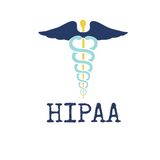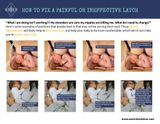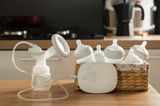Breastfeeding or chestfeeding is a wonderful way to nourish your newborn and build a special bond between you and your baby. However, breastfeeding or chestfeeding can also be challenging, especially in the early days.
Preparing for breastfeeding or chestfeeding prenatally can help set you up for success and make the transition to breastfeeding smoother for both you and your baby. In this blog post, we will discuss how to prepare prenatally for breastfeeding or chestfeeding, with a particular focus on education and identifying risk factors for low milk supply that can be assessed prenatally.
- Education
One of the most important things you can do to prepare for breastfeeding or chestfeeding is to educate yourself. Breastfeeding/chestfeeding is a learned skill, and it can take time and practice to get the hang of it.
You can attend a breastfeeding class, read books or articles about breastfeeding or chestfeeding (though there are few books about chestfeeding☹️), and talk to other mothers or parents who have breastfed or chestfed their babies. Learning about the benefits of breastfeeding and chestfeeding, the mechanics of milk production and letdown, and how to properly latch and position your baby can help you feel more confident and prepared for breastfeeding or chestfeeding.
2. Identify Risk Factors for Low Milk Supply
Low milk supply can be a concern for some parents, and it’s important to identify any risk factors that can be assessed prenatally. Some of the risk factors for low milk supply include:
- Previous breast/chest surgery or trauma
- Polycystic ovary syndrome (PCOS)
- Insufficient glandular tissue (breasts/chest that do not develop enough milk-making tissue)
- Breasts that are tubular, widely spaced or significantly asymmetrical
- Hormonal imbalances-usually thyroid imbalance
- Blood sugar issues
- History of insufficient milk production
- IVF
Identifying these risk factors prenatally can help you plan for potential challenges and seek support if needed. If you have any of these risk factors, it’s important to work with your healthcare provider and a lactation consultant to create a plan for breastfeeding or chestfeeding that takes your individual needs into account. Some of these issues are much easier to solve if caught early.
3. Build a Support System
Breastfeeding or chestfeeding can be challenging, especially in the early days. Building a support system can make all the difference, it is very helpful if they can take a breastfeeding class or chestfeeding class with you. Talk to your partner, family members, and friends about your decision to breastfeed or chestfeeding and ask for their support. You may also want to consider joining a breastfeeding support group or working with a lactation consultant to get the help you need.
4. A Healthy Lifestyle
Maintaining a healthy lifestyle during pregnancy can help prepare your body for breastfeeding or chestfeeding. Eating a well-balanced diet rich in nutrients, staying hydrated, and getting regular exercise can all support milk production. Avoiding smoking, alcohol, and drugs is also important, as these substances can interfere with milk production and harm your baby.
5. Have the Right Equipment
Having the right equipment can also make breastfeeding easier. Though way less equipment is really needed than most people think. A breast pump can be useful for expressing milk and building up a supply, if you plan to return to work or need to be away from your baby for a period of time. Most insurance companies should provide you with one if you are in the US.
Preparing for breastfeeding prenatally can help you feel more confident and prepared for this important task. By educating yourself, identifying any risk factors for low milk supply, maintaining a healthy lifestyle, building a support system, and having the right equipment, you can help ensure a successful breastfeeding or chestfeeding experience for you and your baby. Remember that breastfeeding or chestfeeding is a learned skill and may take time and practice to get the hang of it. With patience, support, and a little preparation, you can create a positive and fulfilling breastfeeding or chestfeeding experience for you and your little one.
Where to breastfeed or chestfeed in my house

Picture of a woman laid in bed breastfeeding her baby
Setting up comfortable breastfeeding or chestfeeding areas around your house can make the experience of feeding your baby easier and more enjoyable for both you and your baby. A comfortable breastfeeding area should be a peaceful and relaxing space where you can sit and bond with your baby while nursing. Here are some ideas on how to set up comfortable breastfeeding areas around your home and what things should be close by to make the experience as smooth as possible.
- Choose a Comfortable Chair, couch or bed
The first step in setting up a comfortable breastfeeding area is choosing a comfortable reclining chair, couch or bed. A good nursing spot should be easy to recline in and get comfortable in so you can relax, feed in a laid back position and take weight off your perineum or c-section scar, if you have recently given birth. It should also be easy to get in and out of, especially if you have had a C-section or are recovering from birth. Mostly I have not recommended feeding in a chair in the early weeks but some of the electronic recliners seem to work pretty well. Many popular rocking chairs, encourage sitting upright which isn't an ideal position when you are learning to breastfeed/chestfeed and don't haven enough room between the arms for your little one to stretch out.
- Entertainment close by
You will spend a lot of hours feeding your baby in the early weeks and months, its okay to not find every moment magical but to find it a bit boring. Have books, tv, your phone, or what ever else you enjoy that doesn’t need your hands to do to keep you busy close by can be a good idea.
- Use Pillows for Support
Using pillows for support can help make breastfeeding or chestfeeding more comfortable for you and your baby. Mostly I suggest using bed pillows. I have 2 blog posts about how un needed breastfeeding pillows are while learning to breastfeed or chestfeed. Here's the links if you are interested You are better off without that breastfeeding pillow and How to breastfeed without a breastfeeding pillow Use your bed pillows so you can recline comfortably with both arms and your head supported. No reason not to be comfortable, remember how many hours you will be doing this.
- Have a Side Table or Tray
Having a side table or tray nearby can be helpful for holding items you may need while breastfeeding or chestfeeding, such as a water bottle, snacks, burp cloths, and a phone. This can help you stay comfortable and relaxed without having to get up and search for things you need.
- Create a Relaxing Atmosphere
Creating a relaxing atmosphere can help both you and your baby feel calm and comfortable while breastfeeding or chestfeeding. You may want to consider using soft lighting or adding a dimmer switch to your overhead lights or a light bulb that you can dim with your phone. You can also add plants, artwork, or other items that make you feel relaxed and happy. If you plan to feed in this spot at night a red light can be helpful as it gives you the light you need to get settled without waking your little one as much.
- Keep Diaper Changing Supplies Close By
Keeping diaper changing supplies close by can be helpful for those times when your baby needs a diaper change in the middle of a feeding. Keep a diaper changing pad, wipes, and extra diapers within reach so you don’t have to interrupt your feeding to go get them. When they are tiny it is very common for them to poop during a feeding. What goes in must come out.
- Have a Nearby Outlet
If you plan to use a breast pump, having a nearby outlet can be helpful for plugging in your pump. You may also want to consider having a small fridge nearby for storing pumped milk. While this is not necessary, if you are pumping through the night this can be helpful.
- Consider multiple Nursing Station
If you plan to breastfeed in multiple areas of your house, consider setting up a nursing station in each room. A nursing station can include all the items you need for comfortable breastfeeding or chestfeeding, such as your favorite pillows, burp cloths, water bottle, and snacks.
Setting up comfortable breastfeeding areas around your home can make the experience of breastfeeding or chestfeeding easier and more enjoyable for both you and your baby. By choosing a comfortable chair, using pillows for support, having a side table or tray, creating a relaxing atmosphere, keeping diaper changing supplies close by, having a nearby outlet, and considering a nursing station, you can create a peaceful and relaxing space for you and your baby to bond during feedings. Remember, breastfeeding or chestfeeding is a unique and special experience for each family, so find what works best for you and your little one.
There are many ways to get ready to breastfeed or chestfeed your baby as you can see in this article but the most important is to learn how breastfeeding or chestfeeding works and what you should expect in the first days or weeks with your new baby. It is also useful to run through the risk factors and make sure you are do not have any early signs of risk factors that can be supported by seeing a professional during pregnancy so that you are on top of it when your baby arrives.




